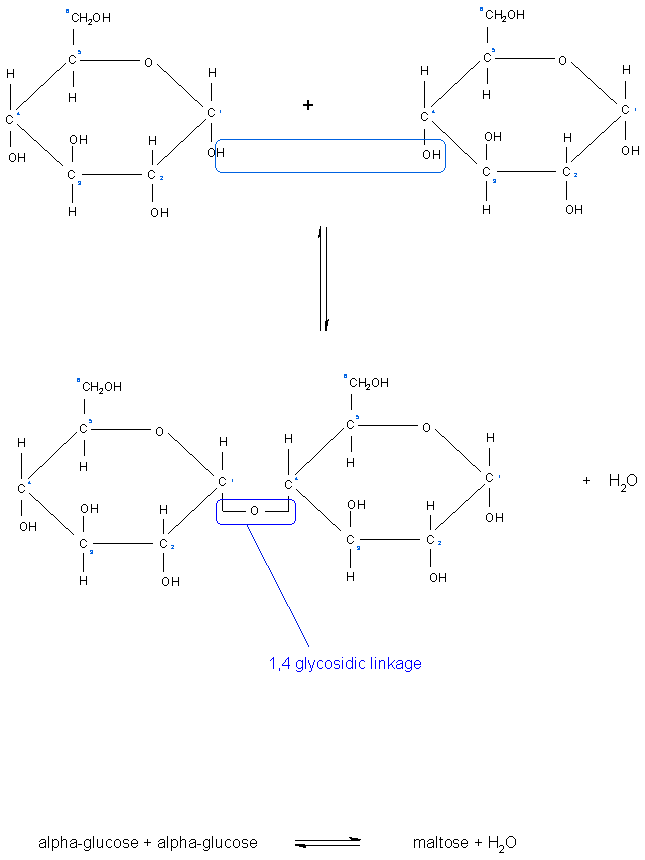Glycosidic bond: Difference between revisions
Jump to navigation
Jump to search
No edit summary |
No edit summary |
||
| Line 5: | Line 5: | ||
<br> | <br> | ||
<ref>http://www.nicksnowden.net/images/Macromolecules/maltose%20formation.GIF - Carbohydrates</ref> | [[Image:Formation_of_glycosidic_bond.gif|Formation of a glycosidic bond between two glucose sugars.]]<ref>http://www.nicksnowden.net/images/Macromolecules/maltose%20formation.GIF - 'Carbohydrates', last accessed on 10/1/11</ref><br> | ||
=== References === | === References === | ||
<references /> | <references /> | ||
Revision as of 16:49, 10 January 2011
Glycosidic bonds join monosaccharides or longer sugar chains to other carbohydrates, forming disaccharides, oligosaccharides and polysaccharides. It is a type of covalent bond.
These sugar chains of monosaccharides are able to form further glycosidic bonds with alcohols and amines to produce sugar acetals/glycosides and nucleosides.If the anomeric carbon of the sugar forms the bond with the oxygen atom in the hydroxyl group in the alcohol, the bond is named an O-glycosidic bond. Conversely, if the anomeric carbon of the sugar forms the bond with the nitrogen atom of an amine, the bond is then called a N-glycosidic bond.[1]
References
- ↑ 'Biochemistry', Sixth Edition, (2006), Jeremy M. Berg, John L. Tymoczko and Lubert Stryer, p.309-310
- ↑ http://www.nicksnowden.net/images/Macromolecules/maltose%20formation.GIF - 'Carbohydrates', last accessed on 10/1/11
